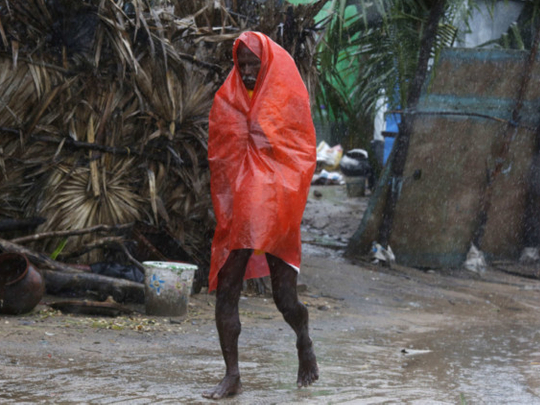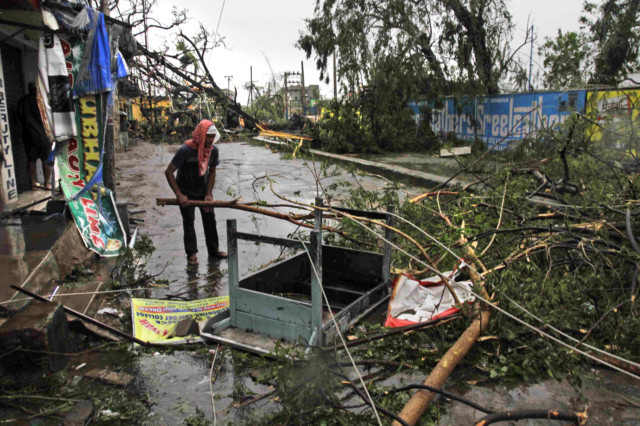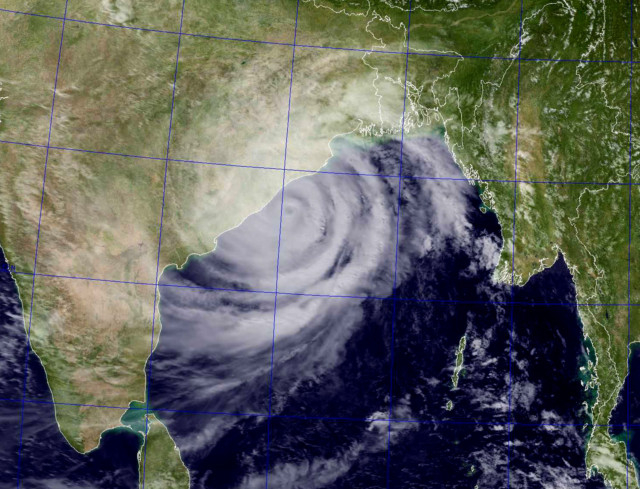
Ganjam/Bhubaneshwar: Daybreak revealed a trail of destruction across coastal areas of eastern India on Sunday after the strongest storm to hit the country in 14 years, but the loss of life appeared limited as more than half a million people had taken cover in shelters.
Cyclone Phailin packed winds of more than 200 kilometres per hour as it made landfall from the Bay of Bengal on Saturday, tearing apart dwellings and uprooting trees, but it lost momentum as it headed inland and was expected to dissipate with about 36 hours.
The government of the state of Odisha said the death toll stood at seven people, all of whom where killed as winds whipped the coast before the storm slammed in, four by falling trees and one when the walls of her mud house collapsed.
The cyclone was one of three major storms over Asia on Sunday. The smaller Typhoon Nari was approaching Vietnam and Typhoon Wipha loomed over the Pacific.
Phailin is the strongest storm to hit India since a cyclone with maximum wind speeds of 260 kilometres per hour lashed Odisha in 1999, killing about 9,000 people, damaging 2 million houses and destroying crops spread over 1.65 million hectares.
At least 550,000 people in the states of Odisha and Andhra Pradesh spent the night in shelters, some of which were built after the 1999 storm. Others took refuge in schools or temples, in what the National Disaster Management Authority called one of India’s largest evacuations.
Airlines changed flight paths on the route between Mumbai and Bangkok, and between Bangkok and the Middle East, the Business Standard reported yesterday, citing an air traffic controller it didn’t identify.
Indigo, India’s biggest domestic carrier by market share, cancelled some flights to and from Bhubaneshwar in Odisha, the company’s external communications agency said yesterday.
India’s railways also cancelled or diverted some trains in the region, the Times Now television network reported.
Truck driver Jayaram Yadav huddled in the cab of his 28-tonne vehicle as wind howled around him on Saturday night.
“I was just thinking: it’s going to topple over — and then it did,” said Yadav, who survived unscathed as his cargo of vehicles was scattered across a coastal highway.
Television images showed cars flipped on their sides and debris-strewn streets in the silk-producing city of Brahmapur, one of the hardest hit areas. A few trucks and motorbikes returned to city streets as residents emerged to survey the damage.
Winds slowed to 90 kilometres per hour early on Sunday and the rain eased. But large swathes of Odisha, including its capital, Bhubaneshwar, were without electricity for a second day after the storm pulled down power cables. Officials said it was too early to give an accurate damage assessment.
“We will assess after the cyclone eases ... even now the cyclone is on,” said Odisha’s chief secretary J.K. Mohapatra.
“There has been pretty severe devastation in Brahmapur town.” Soldiers and rescue workers in helicopters, boats and trucks fanned out across the two states.
Higher sea levels driven by storm surges can cause the worst destruction. Phailin was forecast to drive sea levels up 3.5 metres at its peak.














